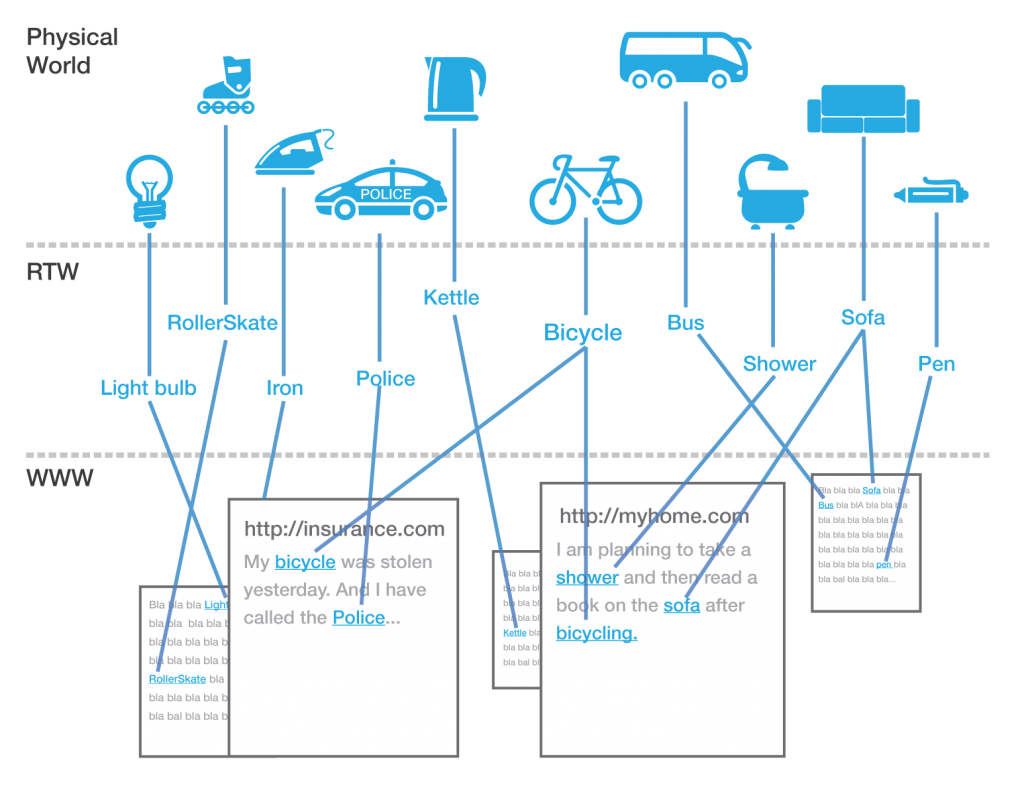Nornir’s Real Time Web Network uses a new and upgraded event-based infrastructure. This infrastructure is crucial for developing Internet of Things (IoT) solutions for smart cities. And it can do so without contributing to increased energy consumption. Real Time Web distributes data using horizontal links and works much similar to today’s hyperlinks used in the World Wide Web.
Web today
Today, hyperlinks on the web can link web resources like images, text and video. Web is distinguished from other networks because of the ability to use hyperlinks across domains (URLs). The web allows you to compile information with custom data structures; you don’t have to bind yourself to a giant large database. Thus, a network of structured information spreads itself following links from various information providers.
The Web is a heterogeneous network that functions in a decentralized manner: no one has full control over it. Today, this network is the World’s most popular sharing network with trillions of information links, forming the most important commercial marketplace for promoting goods and services.
People VS Machines
Machines, sensors, and smart objects do not use hyperlinks to share information today. Since information is man-made, machines do not find it “interesting”. However, fresh data is essential for machines so they can manage, act and contribute to increasing value creation.
Information is by definition historical. It is stored as files on the network which structures and processes the data in such a way it is readable to people and made available on the web to other people. Today’s web allows people to share information with each other, but does not allow computers, robots and sensors to share data.
A key difference between information and data is that data requires a two-way communication. Data is not files that the client share, but asynchronous data streams. Up to today, two-way communication between machines uses an API (Application Programming Interface). With no better method, APIs have become a standard taught at colleges and universities worldwide. As the Internet of Things grows, the need for new products and services sharpens communication needs. Which in turn emphasizes the issues and challenges with API programming.
Stuck in the present
A network with heterogeneous features, like World Wide Web, can communicate across domains and networks without being dependent on the domains you communicate through. Linking allows you to set up communication with data sources and customize data from these to custom structures. How future data structures are set up is completely indifferent, a feature empowering web to be a heterogeneous self-scaling network; that is not owned by a single player.
Web today does not support bi-directional communication, thus it’s common to use API technology from cloud and infrastructure providers. API requires the interface to be defined, structured and programmed before you can start a communication. This limits communication to known data structures and you lose the ability to communicate with unknown and future systems in the network.
Because APIs can only communicate with known structures, they are bound to the present and not suitable as underlying technology for web communication. Suppliers using API will therefore be limited by the data structure, and remain silo-like entities without the ability to achieve heterogeneity. The consequence is challenges related to scalability, as well as continuous costs due to integration development and maintenance.
Two-way communication enabled for Web
After ten years of intensive research, development and pilot installations, Nornir has solved the challenge: Thanks to the Real Time Web network links can now do two-way communication on the Web; enabling Web to become the facto standard for all machine-to-machine communication (M2M).
Currently, the network is sold as a private intranet for IoT and Smart Cities with increasing demand. The long-term goal is to launch Real Time Web for the global market. Perhaps one day, the network will grow as big as the World Wide Web? This question is up to a new generation of developers to answer as they unfold the future. Or maybe the robots are those to unfold it?
Adding new features to the World Wide Web
Comparing Real Time Web to today’s Web, the new network has several advantages:
- Event-based and distributing data by observing changes and not requests: Reducing energy demand by over 90 %.
- No middleware or use of API: Database or storage is not needed to ensure communication.
- Data between machines and sensors goes p2p and not via a collection point: Ensures privacy and ownership of the data.
- Service providers can check the connection points: Even if two clients (p2p) have an active data connection with each other, domain owners can check the connection and cut the connection without having access to the data.
- Support for semantic predicates in data links: Business logic and algorithms can be distributed in the network without losing ownership. It also enables AI systems to develop autonomous services by linking properties from different vendors.
- Links and data structures can change without affecting communication: All future services will communicate two-way with all current services just by setting up a link.
- You can link sensors, and smart objects (independent of protocols) across networks and infrastructure: Web becomes the standard method of communication with physical objects.
If you like to read more in depth about our new invention you might like to read the white paper written by the Norwegian Computing Center.




1 Comment
Lillie Montes · 2nd March 2021 at 01:16
Greetings! Very helpful advice within this post!
It is the little changes that produce the most important changes.
Thanks a lot for sharing!
Comments are closed.